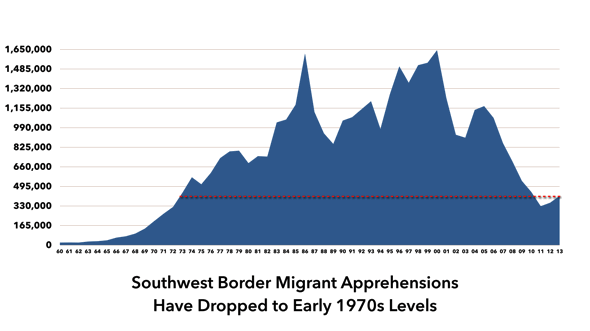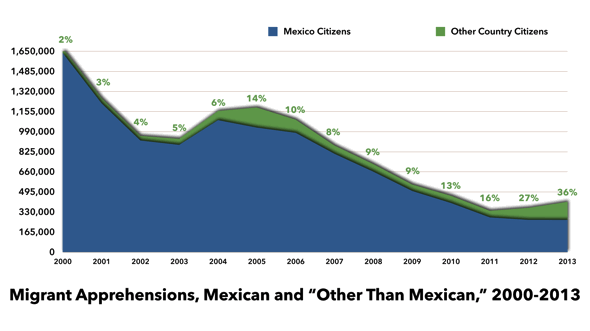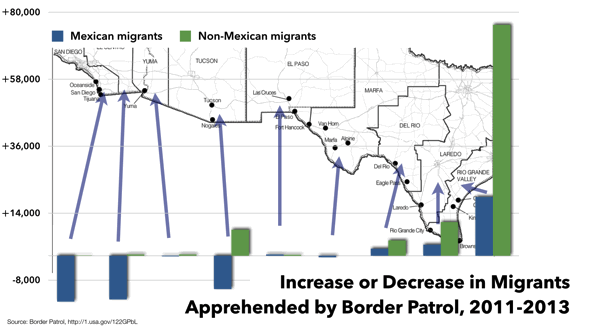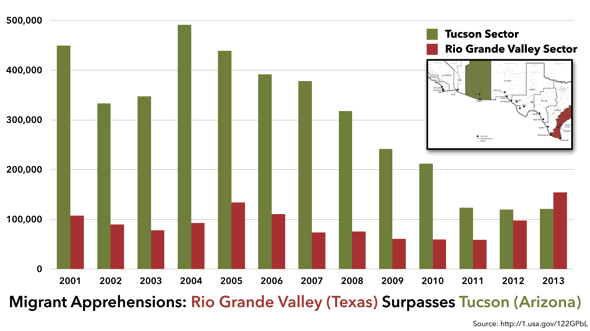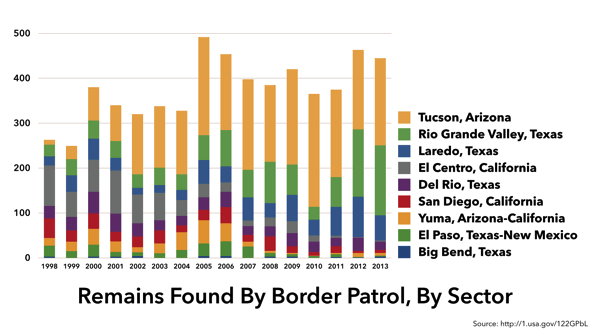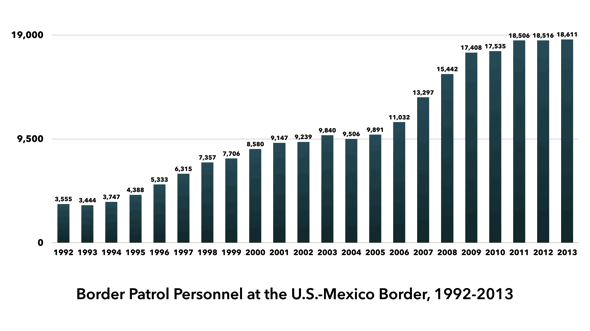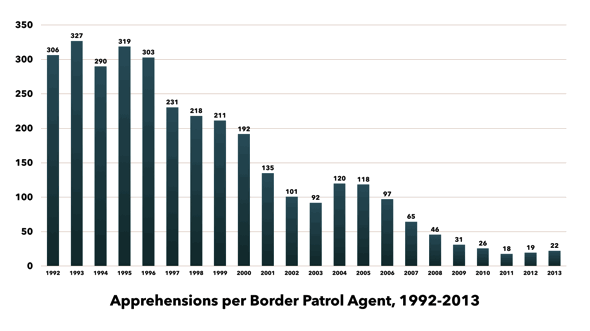Migrants, increasingly non-Mexican, are arriving in Texas—and frequently dying in remote areas
This week, the U.S. Border Patrol released statistics about its activities in 2013, including its apprehensions of migrants along the U.S.-Mexico border. This allowed WOLA to update its own monitoring of trends along the border, like those illustrated in the graphics below. Click on each to expand its size.
Related: WOLA experts examine trends along the South Texas section of the U.S.-Mexico border.
1. Despite an increase in apprehended migrants in 2013, the flow of undocumented individuals into the United States remains near its lowest levels of the past 40 years. The 414,397 people Border Patrol reports apprehending along the U.S.-Mexico border last year is a 14 percent increase over 2012, indicative mainly of stronger U.S. economic growth. But it is still below the 447,731 apprehensions registered in 2010.
2. The number of Mexican migrants did not increase. Border Patrol apprehended 265,755 Mexican citizens in 2012, and 265,409 in 2013. The 14 percent growth in migrant apprehensions last year owes entirely to citizens of other countries, primarily the “Northern Triangle” of Central America (El Salvador, Guatemala, and Honduras). Apprehensions of non-Mexicans shot upward by 50 percent between 2012 and 2013, and by a remarkable 175 percent between 2011 and 2013. We are witnessing an exodus of Central American citizens.
3. These new migrants are headed mainly to south Texas, which is geographically far closer to Central America, although the Border Patrol’s south and east Texas sectors (Del Rio, Laredo, and Rio Grande Valley) have all seen modest increases in migration of Mexican citizens as well.
4. The epicenter of migration has shifted from Arizona to south Texas. Border Patrol’s sector in Tucson, Arizona had registered the highest number of apprehensions every year since 1998. That changed in 2013, as the sector in Texas’s Rio Grande Valley counted 154,453 migrant apprehensions compared to 120,939 for Tucson.
5. Arizona is still deadlier than south Texas, as measured by the number of remains of migrants Border Patrol found last year. Border Patrol found the remains of 445 likely migrants along the U.S. side of the border last year, nearly all of them dead from dehydration or exposure. This was the fourth-largest total in the last 16 years of records. Of last year’s remains, 194 were found in the Tucson sector, and 156 in the Rio Grande Valley sector. Both sectors saw an increase over 2012, though it is likely that in many cases, especially in Tucson, the remains are of individuals who died before 2013.
6. Border Patrol’s big buildup has leveled off. After doubling between 2005 and 2011, and quintupling between 1993 and 2011, the number of Border Patrol agents stationed at the U.S.-Mexico border is no longer increasing. The 18,611 agents stationed at the border in 2013 were an all-time high, but not significantly larger than the staff strengths of 2011 and 2012.
7. The number of migrant apprehensions per Border Patrol agent remains near all-time lows. Border Patrol apprehended 22 migrants per agent in 2013, a figure derived by dividing statistics in the first graphic by the statistic in the above graphic. This is only slightly higher than the 18 apprehensions per agent measured in 2011 and the 19 in 2012. It is one fifteenth the level that was common in the early 1990s.

